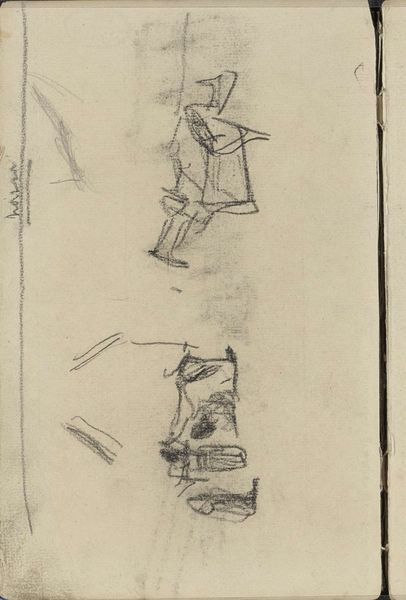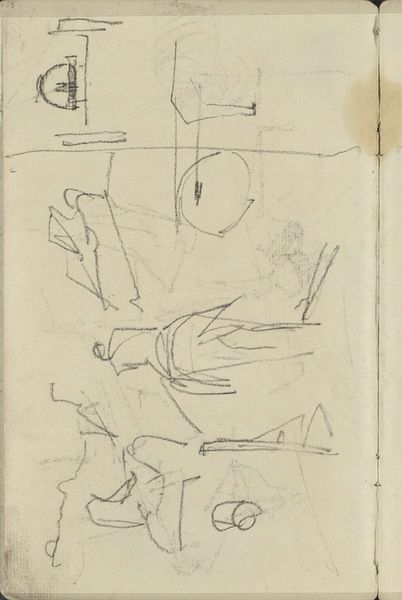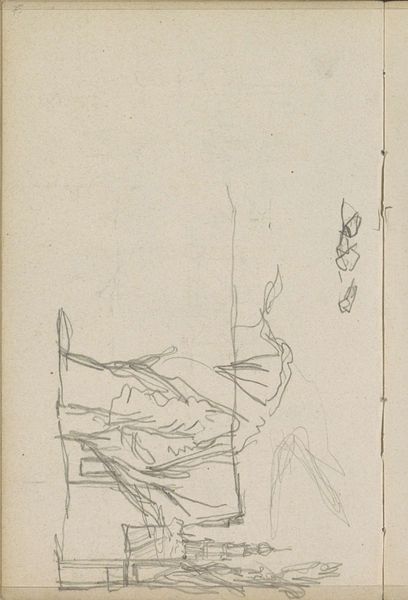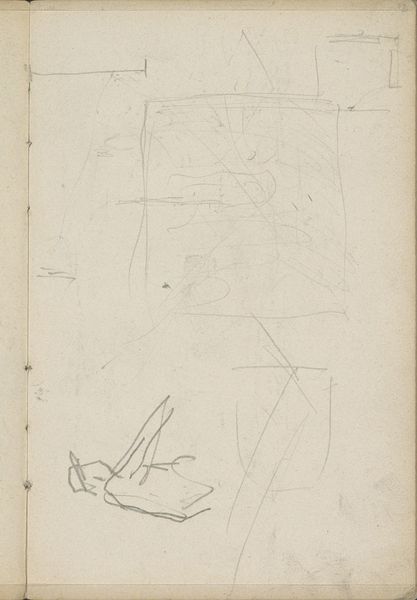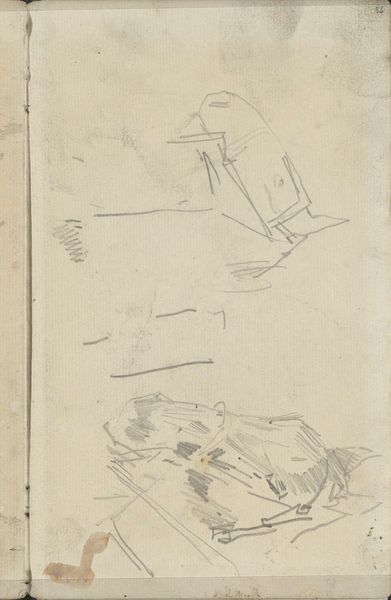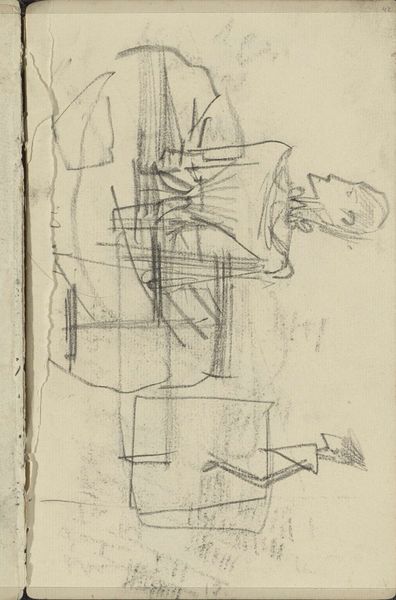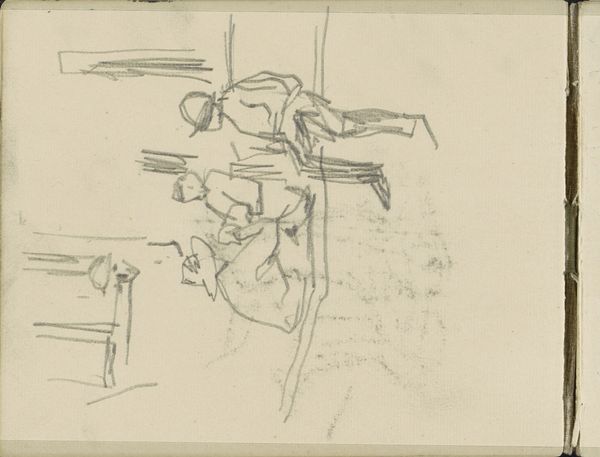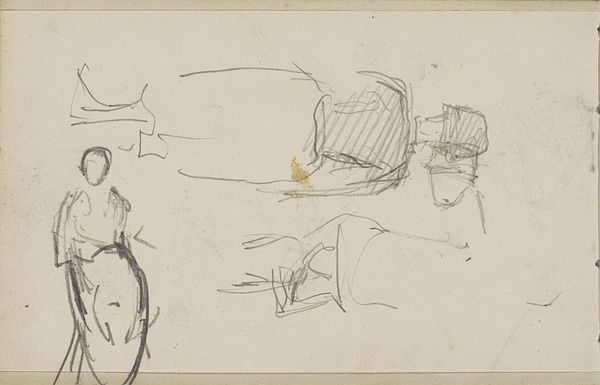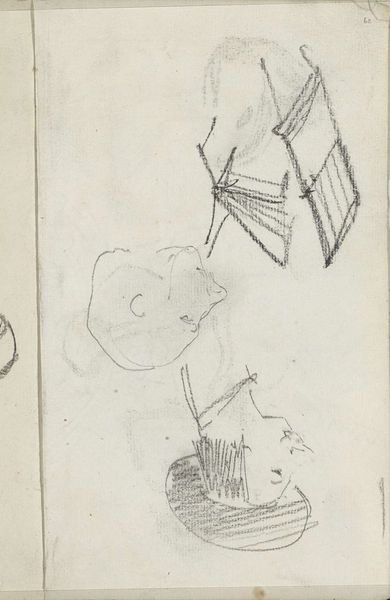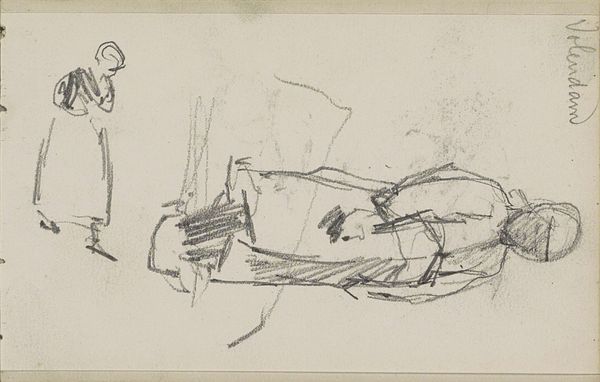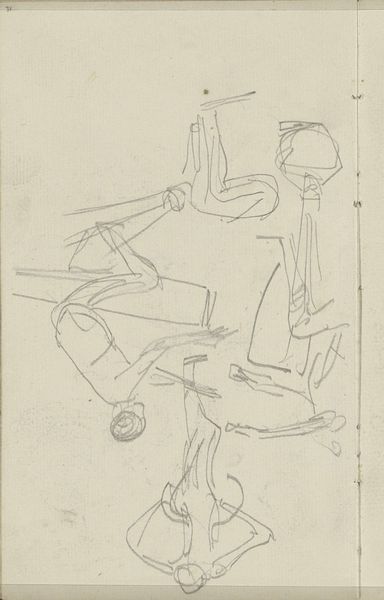
drawing, paper, pencil
#
portrait
#
drawing
#
quirky sketch
#
impressionism
#
paper
#
personal sketchbook
#
idea generation sketch
#
sketchwork
#
character sketch
#
pencil
#
sketchbook drawing
#
genre-painting
#
storyboard and sketchbook work
#
fashion sketch
#
sketchbook art
#
realism
#
initial sketch
Dimensions: height 90 mm, width 140 mm
Copyright: Rijks Museum: Open Domain
Curator: Here we have Jacob Maris’s "Sketches of a Woman at the Pump," dating roughly from 1847 to 1899, housed here at the Rijksmuseum. It’s rendered in pencil on paper. Editor: My immediate reaction is that there’s a real intimacy to it, like we're peering into Maris' personal sketchbook. There’s a lightness to the touch that’s both ephemeral and very engaging. Curator: Exactly. The rapid strokes suggest the influence of impressionism, don’t they? He’s less concerned with precise anatomical accuracy and more with capturing a fleeting impression of movement. We see this in the way the clothing folds and flows around the figure. Editor: It definitely speaks to broader genre-painting traditions of the time, depicting everyday life. I wonder, what did it mean to portray labor like this, focusing on women and domestic tasks? How does that mirror the social roles they occupied? This visual representation is far from objective; it's encoded with layers of societal expectations and artistic agency. Curator: Certainly, those aspects can be investigated, but focusing purely on the sketch itself, we find an interesting tension between the finished quality of the woman at the pump compared to the almost frantic scribbles representing other aspects of the composition. Maris clearly prioritized capturing this woman, studying her form and gesture closely. Editor: Right. But let's also not forget the power dynamics inherent in such observational drawings. There's a whole history of how female subjects are presented by male artists; the power they exert is quite subtle and has roots within patriarchy. Curator: It's a point worth acknowledging, but from an aesthetic standpoint, I’m interested in how the dynamism achieved through his application of line emphasizes form; you can understand his artistic approach and visual intention when thinking about the drawing. Editor: And to take a final thought for consideration: examining these “quick sketches” allows us to reconsider what "finished" art really means and for whom.
Comments
No comments
Be the first to comment and join the conversation on the ultimate creative platform.
